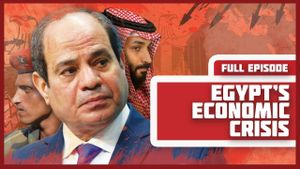Mapping efforts are taking on new forms across the globe, with innovative initiatives aimed at enhancing visitor experience, resource allocation, and integrating technology more deeply with navigation. Among these, the launch of the 'Discover Mecca' map, spearheaded by the Royal Commission for Mecca City and the Holy Sites, showcases how local authorities can support tourism and cultural preservation.
Authorities have unveiled the first version of the "Discover Mecca" map, which highlights major historical, cultural, and commercial landmarks within the city and offers brief descriptions to help navigate these important sites. This initiative is timely, arriving just before the Muslim holy month of Ramadan, anticipated to draw thousands of worshippers to the Grand Mosque. Saleh Al Rasheed, CEO of the Commission, emphasized, "Developing the map marks a significant step toward preserving historical landmarks, improving visitor engagement, and promoting these sites as cultural and tourist destinations." To facilitate access, visitors can utilize QR codes to download the map and access its features digitally, reflecting the trend of integrating modern technology with traditional tourism.
Meanwhile, across the Atlantic, U.S. officials are eyeing their resources closely. Interior Secretary Doug Burgum recently announced plans at the Conservative Political Action Conference to conduct thorough mapping of oil and natural resource deposits across U.S. federal lands. Dubbed the mapping initiative, this plan aims to analyze the vast public lands believed to hold valuable natural resources worth trillions of dollars. Burgum underscored this mapping effort as not only pivotal for encouraging domestic resource development but also for reducing dependency on foreign supplies and tackling national debt. He contended these actions are necessary steps to reorient U.S. energy strategies away from the previous administration’s policies directed at emission-free energy advancements.
On another front, mapping technologies are also undergoing rapid developments. Rohan Verma, CEO of MapmyIndia—an Indian digital mapping company—shared insights about the growth of the mapping sphere during his recent interview. What began as CE Infosystems, founded by his parents, has evolved significantly since its inception. Verma reflected, "Mapping everything can lead to many use cases," highlighting the company’s broad reach through collaborations with various sectors, including automotive giants like BMW and Tata Motors.
MapmyIndia was among the pioneers of digital mapping in India, creating comprehensive maps when GPS navigation was still nascent. Established around 1995, the company’s approach is unique, having initially focused on enterprise solutions before branching out to mass-use digital platforms. Their site now boasts over 20 million downloads of its Maples app, indicating consumer acceptance and demand for mapping technologies. Despite facing competition from international giants like Google and Apple, Verma believes there is considerable growth potential. "There's going to be competition, but I don’t think the competition realizes it is hard to build and maintain quality maps," Verma stated.
Drawing on historical and cultural significance, these varied mapping initiatives share common ground. They leverage technology not only as tools for navigation but as mechanisms for social engagement and economic growth. By introducing interactive elements like QR codes for accessing maps, these projects widen the scope of audience reach and user participation.
Verma also spoke of the impact mapping technologies can have on sectors like agriculture and urban development, facilitated by partnerships with India’s space agency, ISRO. He noted, "ISRO has been our mentor, inspiration, and godfather, helping us get India’s geospatial stack up and running." This collaboration emphasizes the importance of using mapping for more than just navigation, exploring how it can assist with climate change, urban planning, and resource management.
Across various sectors, just like the tech tools combining elements of old and new, these mapping initiatives signify important advancements. The transition from classic mapping approaches to AI-integrated solutions is predicted to amplify both personal and enterprise applications. Verma mentioned the embodiment of "navigation led, connected, autonomous, shared, and electric platforms" transforming how logistics and mobility can be viewed.
All these initiatives—rooted deeply within their respective societal frameworks—illustrate the burgeoning importance of integrating technology with traditional sectors. Mapping isn’t merely about drawing lines on paper anymore; it’s about enabling real-time access to information, fostering tourism, optimizing resource management, and enhancing public engagement. What remains clear is the intent behind these endeavors: to create accessible routes and information pathways for all.
Whether through the historical lenses of Mecca’s landmarks, the resource utilization of the United States, or the rapid digitalization seen with companies like MapmyIndia, human connection remains at the heart of these mapping initiatives, driving the need for efficient pathways as society progresses.



